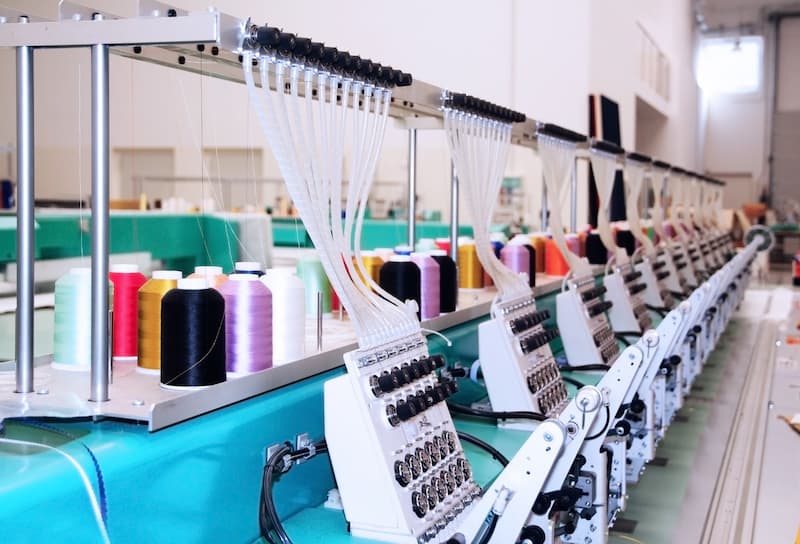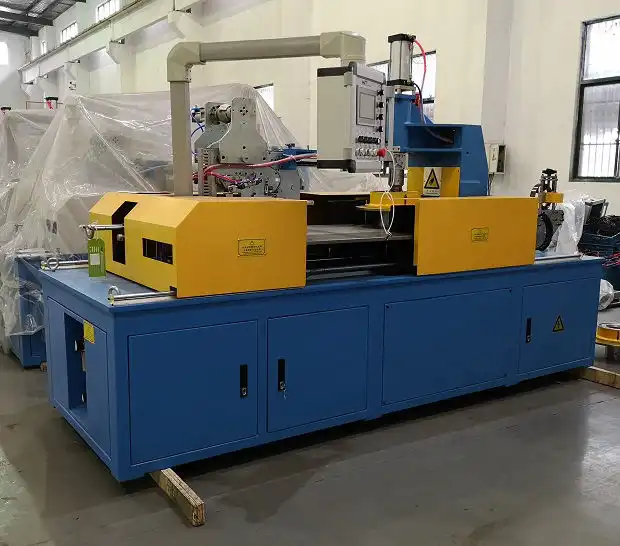Protecting textile machinery coils from corrosion and damage during storage and transit demands robust packaging strategies. A key aspect of this is addressing static electricity, which can cause various wrapping problems. Anti-static wrapping is an important consideration to ensure the coils arrive at their destination in prime condition.
The Menace of Static in Textile Coil Packaging
Static electricity, an often-overlooked enemy in the realm of packaging, poses significant challenges to the integrity and security of textile machinery coils. Its presence can escalate operational costs, induce material waste, and potentially compromise the quality of wrapped goods. In the specific setting of textile machinery coils, static electricity can spawn a host of undesirable issues.
- Film Adhesion Issues: Static charges can cause wrapping films to cling to themselves, to the machinery, and to the coil, making the wrapping process erratic and unreliable.
- Unwinding Problems: Films may refuse to unwind properly from the reel or even wrap around rollers, leading to disruptions in production and potential damage to equipment.
- Dust and Particle Attraction: Static attracts dust and other particles, potentially contaminating the coil surface and affecting its performance.
Understanding Anti-Static Solutions
Fortunately, a range of anti-static solutions can mitigate the effects of static electricity in textile coil packaging. These include anti-static films, static eliminators, and proper grounding techniques.
Anti-Static Films: A First Line of Defense
Anti-static films are specially treated plastics that dissipate static electrical charges. These films typically incorporate anti-static agents that migrate to the film’s surface, creating a conductive layer that allows static charges to dissipate into the air or ground.
Types of Anti-Static Films - Polyethylene (PE) Anti-Static Films: Versatile and cost-effective, suitable for general packaging needs.

- Polypropylene (PP) Anti-Static Films: Offer higher tensile strength and clarity than PE films.
- Static Shielding Films: Designed to protect sensitive electronic components from electrostatic discharge (ESD). Although not typically required for metallic coils, they may be useful if coils contain electronic parts or sensors
Benefits of Anti-Static Films - Reduced static cling, preventing film adhesion issues
- Minimized dust attraction
- Enhanced safety when packaging flammable materials
- Protection of sensitive electronic components
Static Eliminators: Neutralizing the Charge
Static eliminators are devices that generate ions of opposite polarity to neutralize static charges on materials. These devices are often used in high-speed packaging operations to eliminate static charges before they can cause problems.
Types of Static Eliminators - Anti-Static Bars: Long, narrow devices that emit ions to neutralize static charges over a wide area.
- Anti-Static Nozzles: Focus ions on a specific point, ideal for localized static control
- Anti-Static Blowers: Combine ionization with airflow to quickly neutralize static charges.
Placement of Static Eliminators
- Before Wrapping: Position an anti-static bar or nozzle near the point where the film leaves the reel to neutralize the charge on the film before it comes into contact with the coil.
- After Wrapping: Install a static eliminator near the end of the wrapping process to neutralize any remaining static charges on the wrapped coil.
VCI Packaging: An Integrated Solution
Vapor Corrosion Inhibitor (VCI) packaging provides corrosion protection for metal coils while offering the option of static control. VCI films, papers, and coatings release corrosion-inhibiting compounds that form a protective layer on the metal surface, preventing rust and corrosion. Some VCI packaging also incorporates anti-static properties, offering a comprehensive solution for protecting metal coils.
Benefits of VCI Packaging - Corrosion protection
- Anti-static properties (in some products)
- Reduced need for rust-preventative oils
- Metals ready for use directly out of packaging
Best Practices for Anti-Static Wrapping of Textile Machinery Coils
Ensuring that textile machinery coils arrive free of any material degradation requires thoughtful planning and the proper approach.
- Evaluate Static Levels: Assess the static charge levels present during the wrapping process to determine the appropriate anti-static solutions.
- Select the Right Film: Choose an anti-static film that is compatible with your wrapping equipment and provides adequate protection for the coils..
- Grounding: Ensure that wrapping machinery is properly grounded to prevent the buildup of static charges.
- Humidity Control: Maintain adequate humidity levels in the wrapping environment, as dry air promotes static electricity.
- Regular Maintenance: Inspect and maintain anti-static equipment regularly to ensure optimal performance.
Comparing Different Anti-Static Solutions
The following table provides a comparison of different anti-static solutions for textile coil wrapping: Solution Advantages Disadvantages Applications Anti-Static Films Simple to use, cost-effective, provides a continuous protective layer May not be effective in high-static environments, can be torn or damaged General packaging, light to medium static control requirements Static Eliminators Highly effective in neutralizing static charges, suitable for high-speed operations Requires power, can be expensive, requires specific positioning High-speed wrapping lines, environments with high static buildup, large reels. VCI Packaging Provides both corrosion protection and (optionally) anti-static properties Relatively cost-prohibitive comparing to traditional Anti-static films , may not be suitable for all materials. Metal coils requiring corrosion protection and anti-static control. Anti-Static Additives Can directly be added to other raw materials, thus making the overall product anti-static May impact the other raw materials’ physical or chemical properties and add to the overall project cost. Enhances material to make the desired end product Case Studies: Real-World Applications
Several companies have successfully implemented anti-static wrapping techniques to protect textile machinery coils.
- Company A: A large textile manufacturer uses anti-static VCI film to wrap its steel coils, eliminating corrosion and static-related issues. This has resulted in significant cost savings due to reduced material waste and improved customer satisfaction.
- Company B: A metal coil supplier installed static eliminators on its wrapping line to neutralize static charges on the film before it comes into contact with the coils. This has eliminated film adhesion problems and improved the efficiency of the wrapping process.
Future Trends in Anti-Static Packaging
The area is consistently changing and manufacturers need to keep up with current trends to reduce operating costs.
- Biodegradable Anti-Static Materials: Increased demand for sustainable packaging solutions is driving the development of biodegradable anti-static films and coatings.
- Smart Packaging with Static Monitoring: Integration of sensors and IoT technology to monitor static levels in real-time and adjust anti-static measures accordingly.
- Advanced Static Eliminator Technology: Development of more efficient and compact static eliminators with improved performance and energy efficiency.
In conclusion, protecting textile machinery coils requires a strategic approach to packaging, where addressing static electricity is crucial. By applying the right anti-static wrapping techniques, businesses can reduce the chances of electrostatic mishaps and ensure that machinery rolls arrive in flawless condition. Leveraging anti-static films as a shield and employing static eliminators will significantly reduce the potential for costly disruptions due to static.

